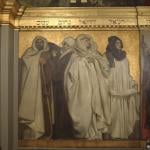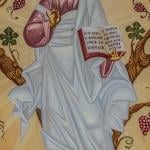We continue looking at Jesus and the Canaanite Woman and some of the issues in textual criticism of the gospels over at :
Perhaps the clearest illustration of the fact that the gospels are “living memory” accounts of eyewitnesses is seen in the narrative of the Institution of the Eucharist. Here is the central rite of the entire Christian tradition. The whole life of the Church revolves around it. Unlike the parables or the teachings preserved in the Sermon on the Mount and similar passages found in Mark and Luke, the Institution Narratives record things spoken one time by Jesus. And yet those words, so central to the whole subsequent life of the Church, are recorded slightly differently in the first three gospels:
“Take, eat; this is my body.” (Matthew 26:26–27)
“Take; this is my body.” (Mark 14:22)
“This is my body which is given for you. Do this in remembrance of me.” (Luke 22:19).
Some postmoderns, uniquely paranoid about the gospels in distinction from all other eyewitness testimony, insist that these minor differences mean the whole story is false. But this is like saying that because some witnesses reported four shots at Dealey Plaza while others reported three, that means that John F Kennedy never existed and was never shot in Dallas.
The sane thing, when you have witnesses so close in their testimony, is to assume that something rather than nothing happened and to take the massive consensus of the witnesses as evidence that Jesus did, in fact, consecrate the Passover bread as his body on the night he was betrayed just as the whole of the apostolic Churches everywhere and at all times have always testified.










